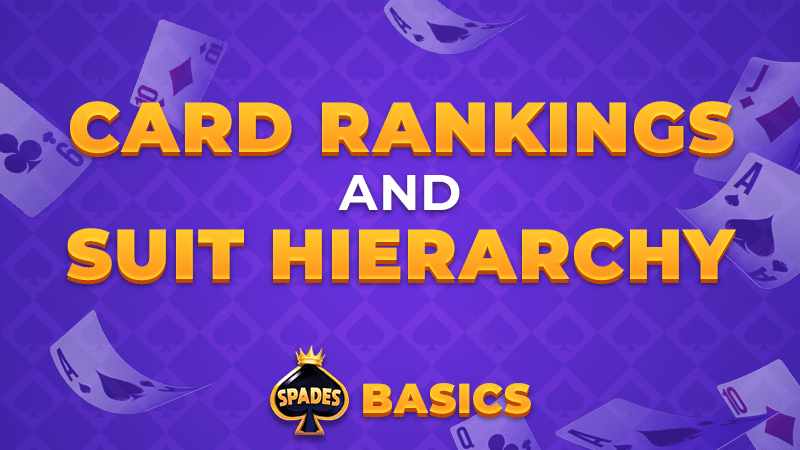Card Rankings and Suit Hierarchy

In this article, we’ll explain how card rankings work in Spades, what the suit hierarchy looks like, and how these rules influence the outcome of each trick.
1. Card Rankings in Spades
Spades uses traditional playing card ranks, from highest to lowest:
Ace > King > Queen > Jack > 10 > 9 > 8 > 7 > 6 > 5 > 4 > 3 > 2
This ranking applies within each suit – Hearts, Diamonds, Clubs, and Spades. For example, if a trick begins with the ♥Queen and another player plays ♥Ace, the Ace wins the trick (as long as no Spades are played).
2. Spades Are Always Trump
In every game of Spades, the Spade suit acts as trump – meaning a Spade card beats any card from any other suit, regardless of rank.
Here’s how it works:
If a trick starts with a non-Spade suit (e.g., Clubs) and no Spades are played, the highest card of that suit wins.
If one or more players are out of the led suit and play Spades, the Spade wins the trick.
If multiple Spades are played, the highest-ranking Spade takes the trick.
3. The Suit Hierarchy
In Spades, the suits do not have equal power – only one is dominant. Here’s how the hierarchy works:
1. Spades (Trump Suit) – Always the strongest suit. Any Spade will beat any card from the other three suits.
2. Hearts, Diamonds, Clubs – These are non-trump suits. They are equal in power when Spades are not involved.
Key rules to remember:
- Players must follow suit if they can. If Hearts are led and you have a Heart, you must play one.
- You can only play a Spade if you don’t have a card in the led suit
4. What Does “Breaking Spades” Mean?
You can’t lead with a Spade until someone has played one to a trick because they had no cards in the suit that was led. This is called “breaking Spades.”
Once broken, players are allowed to lead with Spades, which introduces a more aggressive phase of gameplay.
5. How Card and Suit Rankings Affect Strategy
Understanding card and suit rankings helps you:
Time your trump cards
Don’t waste high Spades early in the game. Save them for crucial tricks or to prevent opponents from meeting their bids.
Recognize danger zones
When a suit has been played multiple times and you’re out of that suit, other players are likely to be too. This opens the door for Spades to take control.
Support your partner
If your partner leads a suit and you have high cards in that suit, play them only if necessary – otherwise, let them take the trick and preserve your stronger cards.
Block Nil bids
If an opponent has bid Nil (promising to take zero tricks), use Spades strategically to force them to win one. A low Spade at the right time can be enough to spoil their plan.
6. Example: Trick Outcome Based on Card and Suit Ranking
Let’s say the four players play the following cards in one trick:
- Player A: ♥King (leads the trick)
- Player B: ♥10
- Player C: ♠5 (has no Hearts)
- Player D: ♠Queen (also out of Hearts)
Player D wins the trick with the ♠Queen, since Spades trump Hearts, and the Queen outranks the ♠5.
If no Spades had been played, Player A would have won with the ♥King.
As you play more hands, you’ll develop a sense of when to hold onto your high Spades, when to break them, and how to use the hierarchy to your advantage. Knowing what beats what, and why, is the first step toward becoming a more confident and effective Spades player.
Ready to apply this knowledge? Explore more beginner strategies in our Spades Basics section.

